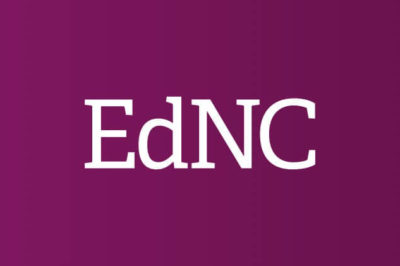Last week, the General Assembly announced which legislators will serve on the Joint Legislative Task Force on Education Finance Reform. The Task Force, created via the 2017 budget bill, is charged with developing recommendations to radically overhaul North Carolina’s school finance system. A serious review of North Carolina’s school finance system could substantially benefit the state. Schoolfunding matters, particularly for students in low-income families. Unfortunately, early indications suggest that the Task Force is uninterested in reforms that would actually improve educational delivery in the state.
School finance can seem quite complicated. Revenue for public schools is collected from a variety of sources. In North Carolina, approximately 63 percent of funding comes from the state, 26 percent from local funds, and 11 percent from the federal government. These funds are then distributed to 115 school districts and 173 charter schools using a number of formulas; some of which can be quite simple, others quite complicated. To make things more complicated, each state has a unique method for collecting school revenues and distributing those funds to school districts. It’s all too easy to get lost in the weeds.
Yet school finance is quite simple when we take a step back from the details. Ultimately, we want to know two things:
- Are we providing enough money to allow every school district to develop students who are ready to successfully enter college or a career?
- Is school funding being distributed in accordance with student need, ensuring that a child has the same opportunities for success regardless of zip code or family circumstances?
In school-finance terms, the first question asks whether our school funding is “adequate.” The second question is asking whether school funding is “equitable.”
Unfortunately, the Task Force isn’t required to examine either of these issues. Despite the efforts of the education community, General Assembly budget writers refused to add language requiring the Task Force to examine the adequacy or equity of North Carolina’s school finance system. This is the equivalent of someone confronting their weight problem, but refusing to consider their diet or exercise.
Instead, the Task Force is based off the foregone and unfounded belief that North Carolina’s school finance system must be completely restructured. The General Assembly apparently reached this conclusion on the basis of a very flawed November 2016 report from the General Assembly’s Program Evaluation Division. That report failed to examine the issues of adequacy or equity and recommended shifting funding from poor districts to rich districts. It’s unclear why such a report has been treated seriously by North Carolina’s policymakers.
As a result of this flawed report, the Task Force will “develop a new funding model for the elementary and secondary public schools of North Carolina based on a weighted student formula,” by October 1, 2018. A weighted student formula would be a radical change in the way North Carolina funds its schools. It is also a tall task for any legislative body. For example, Maryland recently took three years to re-evaluate and modify its existing weighted student formula. California went through a two-year process to revamp its school funding formulas. Both states hired outside school finance experts and engaged key stakeholders to thoughtfully examine the vital questions of adequacy and equity.
It is unlikely the work of North Carolina’s school finance Task Force will develop a new model with such care. North Carolina’s one-year timeline is too brief for a careful, thoughtful analysis that incorporates meaningful feedback from stakeholders. The General Assembly has failed to provide the Task Force with the funds to hire outside school finance experts, and – based on the Program Evaluation report – apparently lacks such capacity in-house. Finally, the Task Force’s reluctance to consider adequacy or equity indicates that the body isn’t seriously looking for alternatives that will improve educational outcomes for students.
Even if the Task Force was willing and capable of developing an adequate and equitable school funding system, it is unlikely that the General Assembly would be able to implement such a plan. Unless the General Assembly is willing to substantially increase its investment in public school children, any new formula is going to create a series of winners and losers. If a new school funding plan proposes to reduce appropriations to certain districts, districts at threat of losing funding will vigorously oppose the changes. For example, the General Assembly’s 2010 study of school funding formulas made 11 recommendations to be made within existing funding levels. None of these recommendations have been adopted by the General Assembly since each would create winners and losers. To implement an entirely new funding system, as the Task Force is considering, the state would need to provide substantial “hold-harmless funding” to ensure that no district’s finances would be negatively impacted. However, this General Assembly has shown no interest in increasing public school resources, and will be further hamstrung by future tax cuts that are predicted to reduce state revenues by a further $400 million in 2019.
The shame is that a legislative task force on school funding could be incredibly useful. A growing body of evidence shows that the level and distribution of school funding can improve outcomes for students. North Carolina’s school finance system is ripe for serious examination. The degree of equity in North Carolina’s school finance system hasn’t been seriously studied in seven years, and the state has never conducted a study of school funding adequacy. An analysis of our system’s adequacy and equity would provide policymakers of both parties with a shared goal for school funding in North Carolina and move the state away from partisan finger-pointing over school budgets. Unfortunately, this General Assembly appears uninterested in addressing these vital issues with the seriousness they deserve.
Editor’s Note: This article was published by NC Policy Watch on September 20, 2017.


